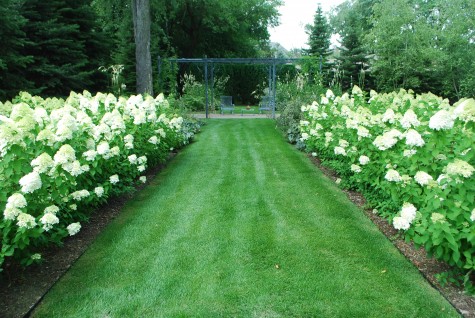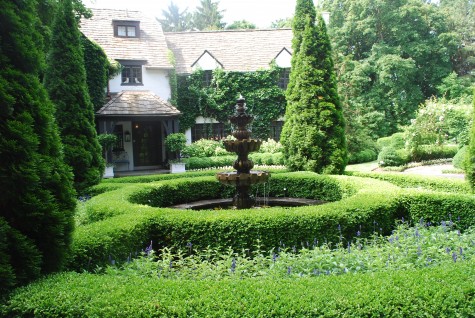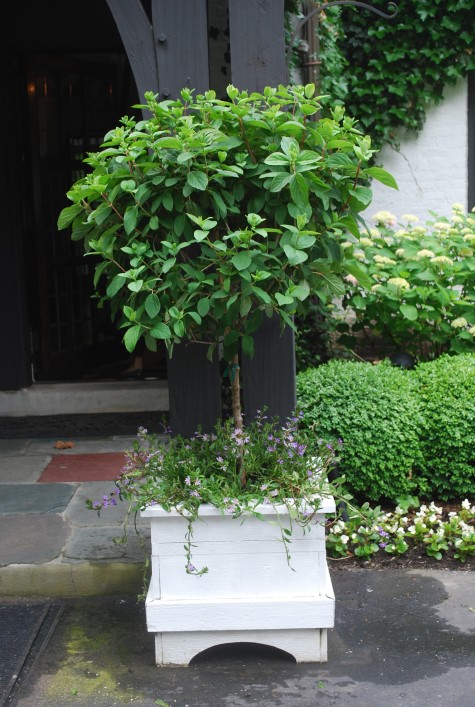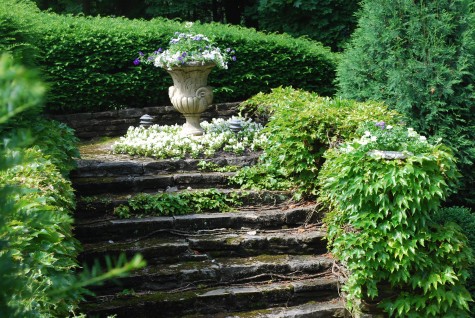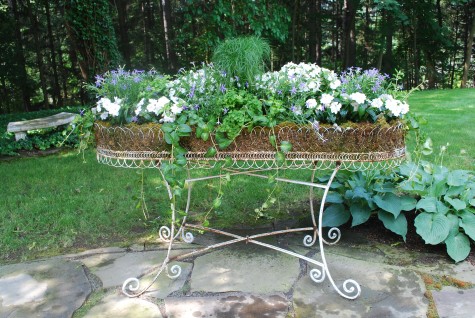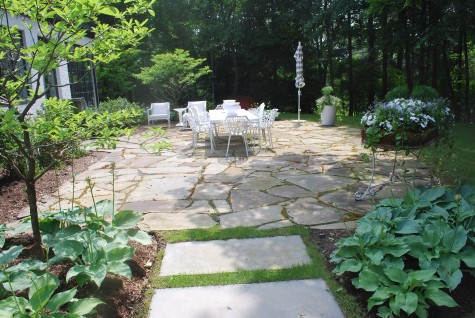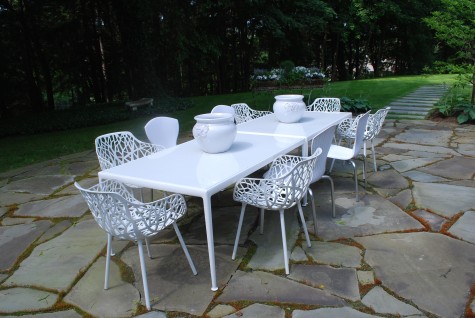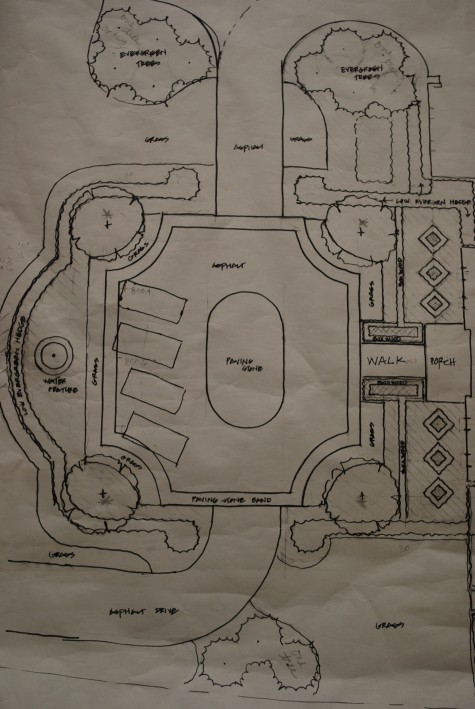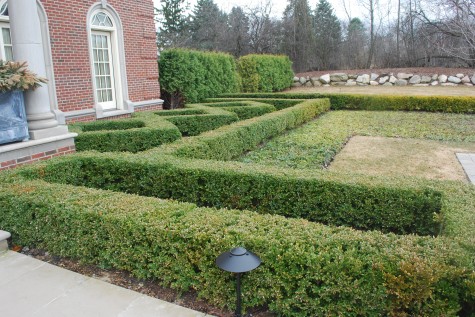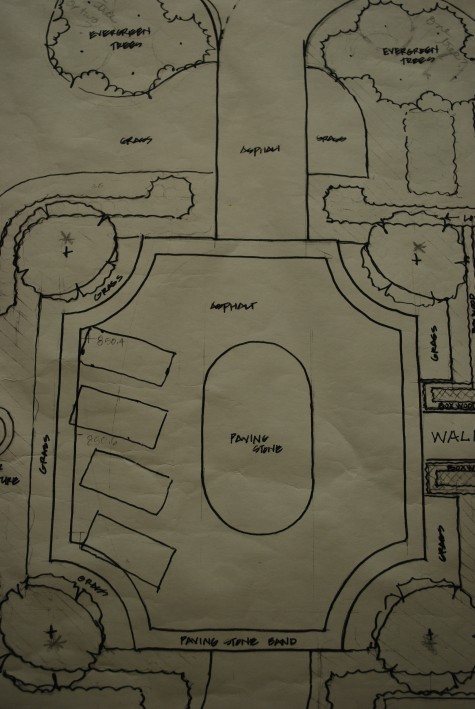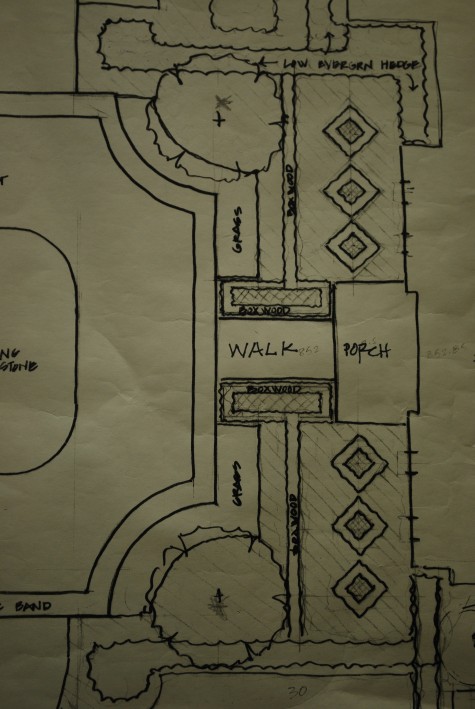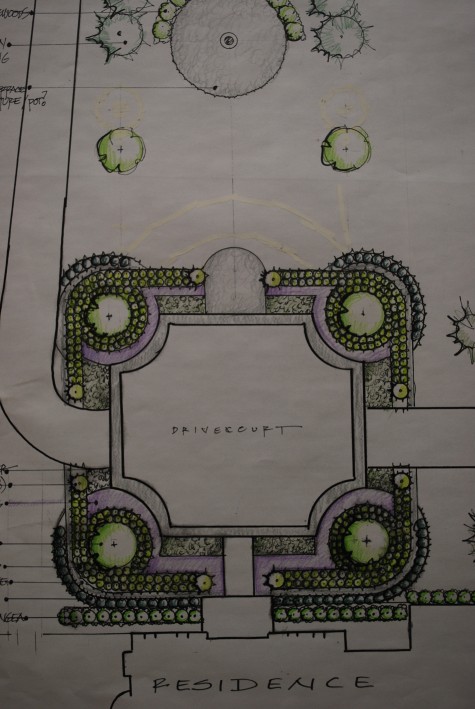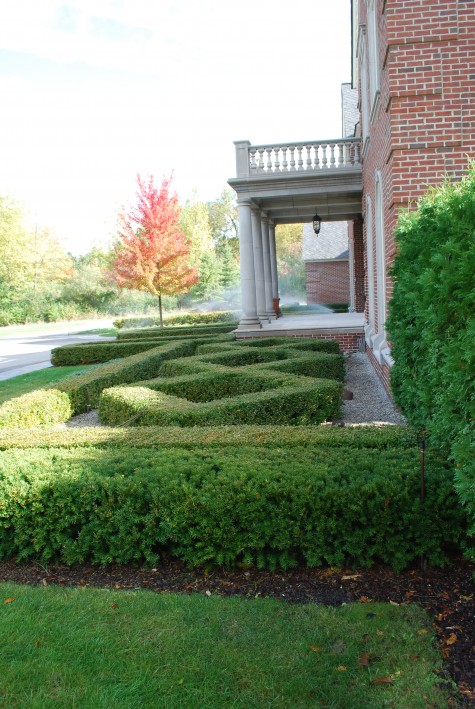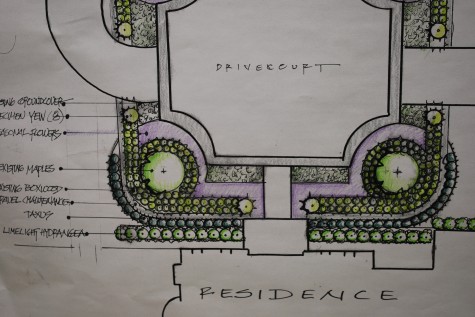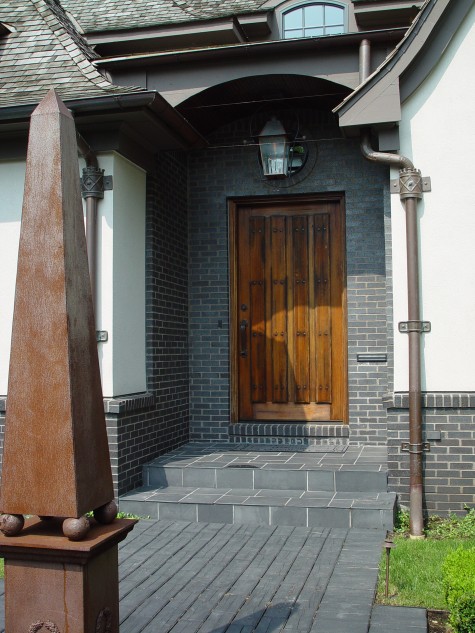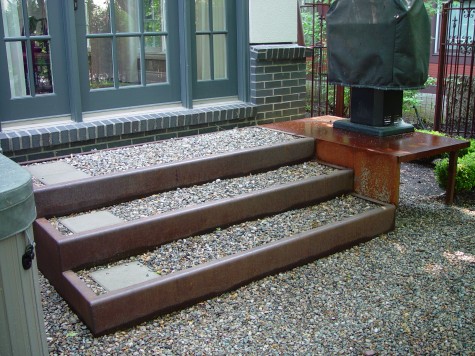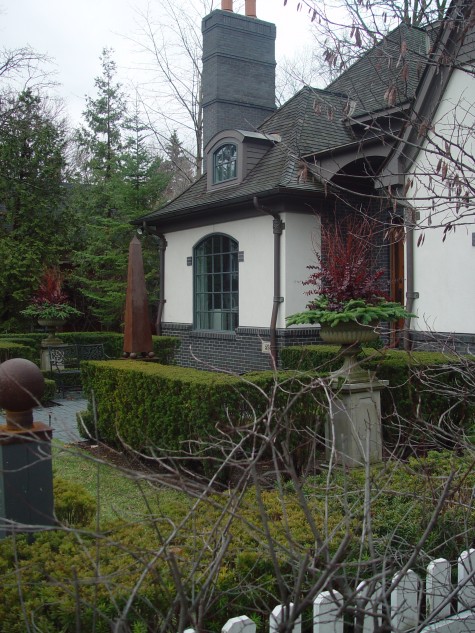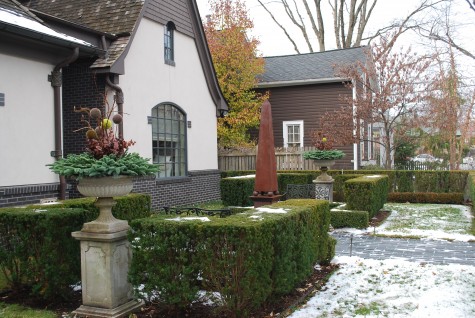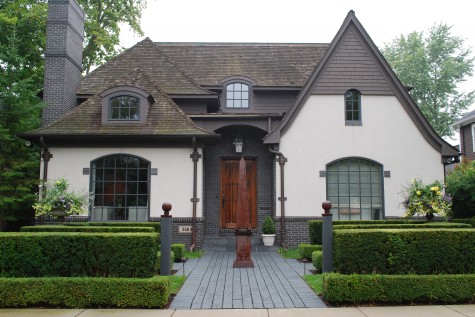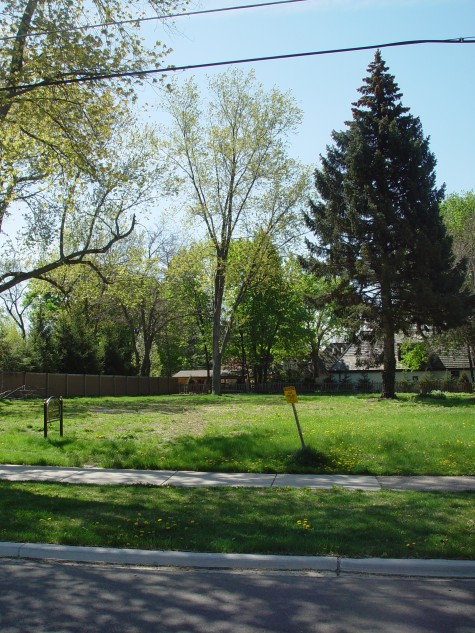 A client purchased an empty lot next door to them, with the idea of completely reinventing the landscape such that two properties would read as one. Though it did not have the best looking shape in the world, there was an existing silver maple they were reluctant to take down. I understand this feeling completely; I do not like to take down trees either. I work with existing plants all the time; we would work with this one.
A client purchased an empty lot next door to them, with the idea of completely reinventing the landscape such that two properties would read as one. Though it did not have the best looking shape in the world, there was an existing silver maple they were reluctant to take down. I understand this feeling completely; I do not like to take down trees either. I work with existing plants all the time; we would work with this one.
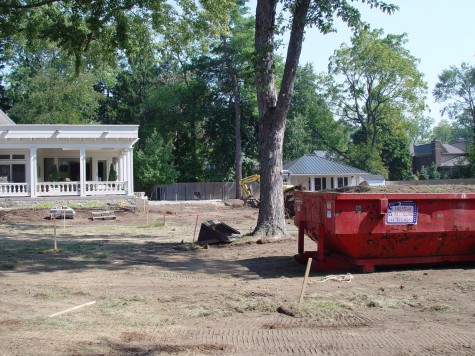 Every other plant on both lots was dug and moved. The maple was out there on its own. I did not want to design a landscape around this tree; it was in less than ideal condition. There were views across the new lot that would be important from the rear porch; I could tell right away that the landscape design would be impacted by this tree. I designed the schematic landscape as if it were not there, knowing that when the time came, I would be working around that tree.
Every other plant on both lots was dug and moved. The maple was out there on its own. I did not want to design a landscape around this tree; it was in less than ideal condition. There were views across the new lot that would be important from the rear porch; I could tell right away that the landscape design would be impacted by this tree. I designed the schematic landscape as if it were not there, knowing that when the time came, I would be working around that tree.
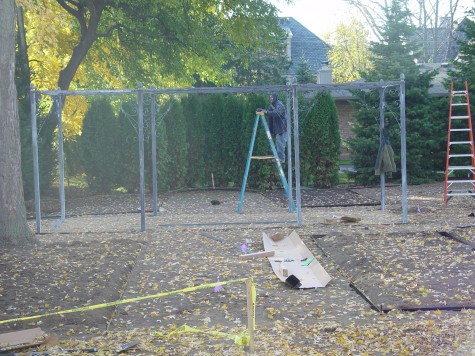 The landscape eventually called for four large perennial beds that would terminate in a radius of arborvitae. A pergola 27 feet long set midway and perpendicular to those beds visually anchors the space. The silver maple is just barely visible on the left; the trunk is half in, and half out of the bed. I rather like a very formal design that is punctuated by some unexpected element. The element of surprise can be a very effective way to focus attention on the overall geometry of the space.
The landscape eventually called for four large perennial beds that would terminate in a radius of arborvitae. A pergola 27 feet long set midway and perpendicular to those beds visually anchors the space. The silver maple is just barely visible on the left; the trunk is half in, and half out of the bed. I rather like a very formal design that is punctuated by some unexpected element. The element of surprise can be a very effective way to focus attention on the overall geometry of the space.
 There was but a very short time that this view would be visible. Once the plants were installed, it would look like that tree had sprouted and grown out of an existing garden. The fact that the trunk tips slightly away from the garden lends a little visual weight to that argument. Much more difficult than than getting this tree to work with these four quadrant gardens would be getting the perennials to work with that tree. The maple casts a good deal of shade-the shade was by no means even. I wanted a tall and substantial garden with plant material that repeated the same mix in each quadrant. My client wanted perennials with white, lavender and purple flowers.
There was but a very short time that this view would be visible. Once the plants were installed, it would look like that tree had sprouted and grown out of an existing garden. The fact that the trunk tips slightly away from the garden lends a little visual weight to that argument. Much more difficult than than getting this tree to work with these four quadrant gardens would be getting the perennials to work with that tree. The maple casts a good deal of shade-the shade was by no means even. I wanted a tall and substantial garden with plant material that repeated the same mix in each quadrant. My client wanted perennials with white, lavender and purple flowers.
 The view out to the gardens is a long one. What was an empty lot is not so empty anymore. I believe that even if the maple had fallen within the grass path out to the pergola, the design would still have worked. Three multi-trunked birch that had once been in the back yard were successfully transplanted to the side lot.
The view out to the gardens is a long one. What was an empty lot is not so empty anymore. I believe that even if the maple had fallen within the grass path out to the pergola, the design would still have worked. Three multi-trunked birch that had once been in the back yard were successfully transplanted to the side lot.
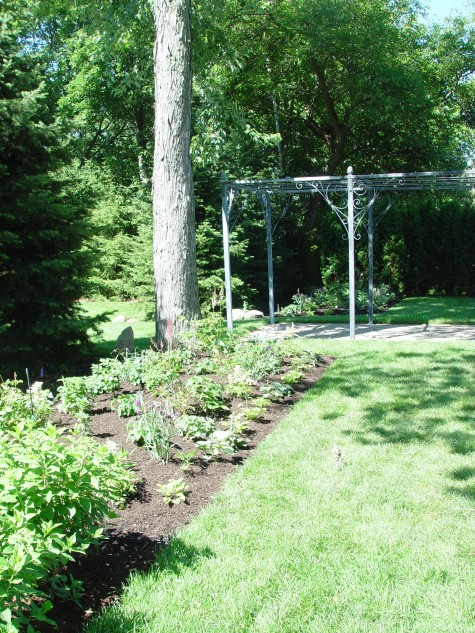 I chose plants with a reputation for tolerating varying conditions. Hellebores I knew would do fine even in the sunnier areas. Bridal Veil Astilbe, and Astilbe Tacquettii Superba do well here. Gold drop hosta, Jack Frost brunnera, White Innocence and Concord grape tradescantia and alchemilla mollis were planted along the border with sufficient space in between to allow for some low annual planting. The dominant plant is snakeroot-cimicifuga racemosa. Its white bottle-brush flowers on long graceful racemes give a garden the height I was after. Monarda fistulosa Claire Grace gives a great show of lavender flowers at about the same time.
I chose plants with a reputation for tolerating varying conditions. Hellebores I knew would do fine even in the sunnier areas. Bridal Veil Astilbe, and Astilbe Tacquettii Superba do well here. Gold drop hosta, Jack Frost brunnera, White Innocence and Concord grape tradescantia and alchemilla mollis were planted along the border with sufficient space in between to allow for some low annual planting. The dominant plant is snakeroot-cimicifuga racemosa. Its white bottle-brush flowers on long graceful racemes give a garden the height I was after. Monarda fistulosa Claire Grace gives a great show of lavender flowers at about the same time.
 The pergola was planted with sweet autumn clematis, clematis Jackmani Superba, and clematis viticella violacea. It has been a challenge to keep the rabbits away from them, but they finally seem like they are taking hold.
The pergola was planted with sweet autumn clematis, clematis Jackmani Superba, and clematis viticella violacea. It has been a challenge to keep the rabbits away from them, but they finally seem like they are taking hold.
 I plant an occasional nicotiana alata white, here and there. White Japanese anemone and aconitums are the star of the show in very late summer. They are just budding up now.
I plant an occasional nicotiana alata white, here and there. White Japanese anemone and aconitums are the star of the show in very late summer. They are just budding up now.
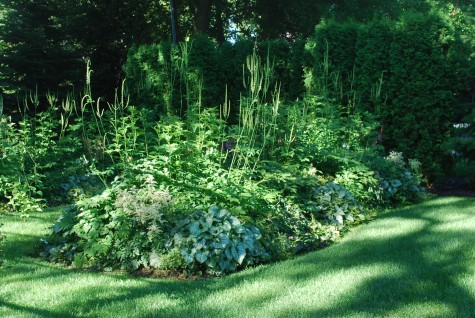 It has been three years since this garden was planted; it seems to be doing well. Of course there will come a time when some division or replacing will be necessary. The clematis are a little behind schedule-the day when they are dripping from the roof of the pergola will be a good day.
It has been three years since this garden was planted; it seems to be doing well. Of course there will come a time when some division or replacing will be necessary. The clematis are a little behind schedule-the day when they are dripping from the roof of the pergola will be a good day.
